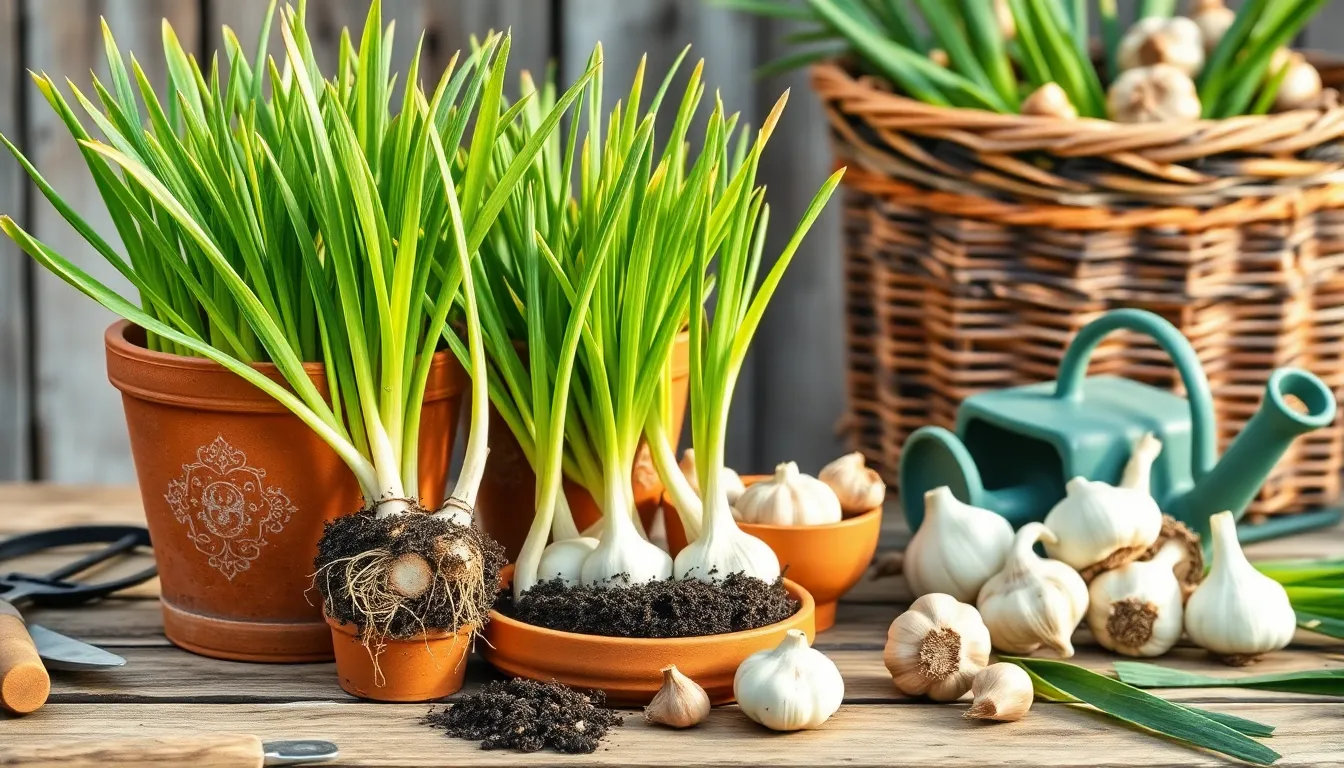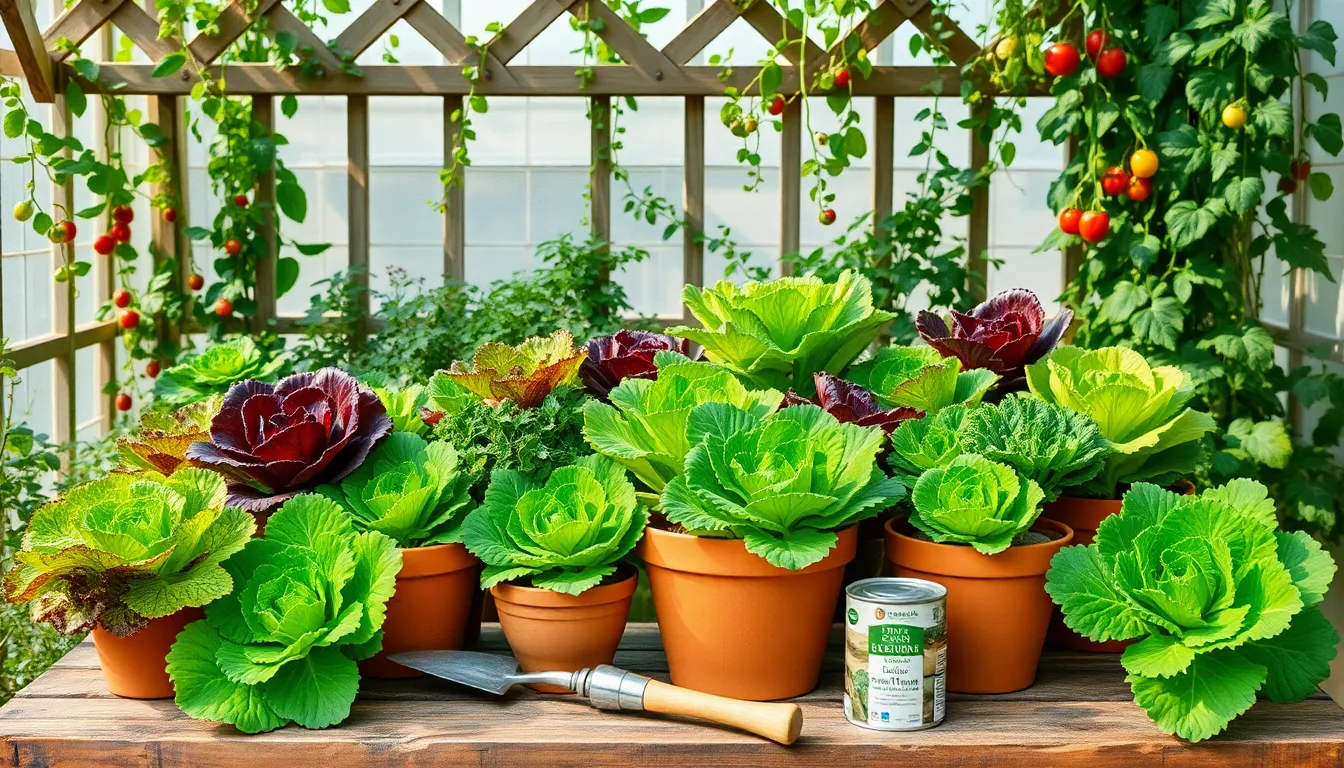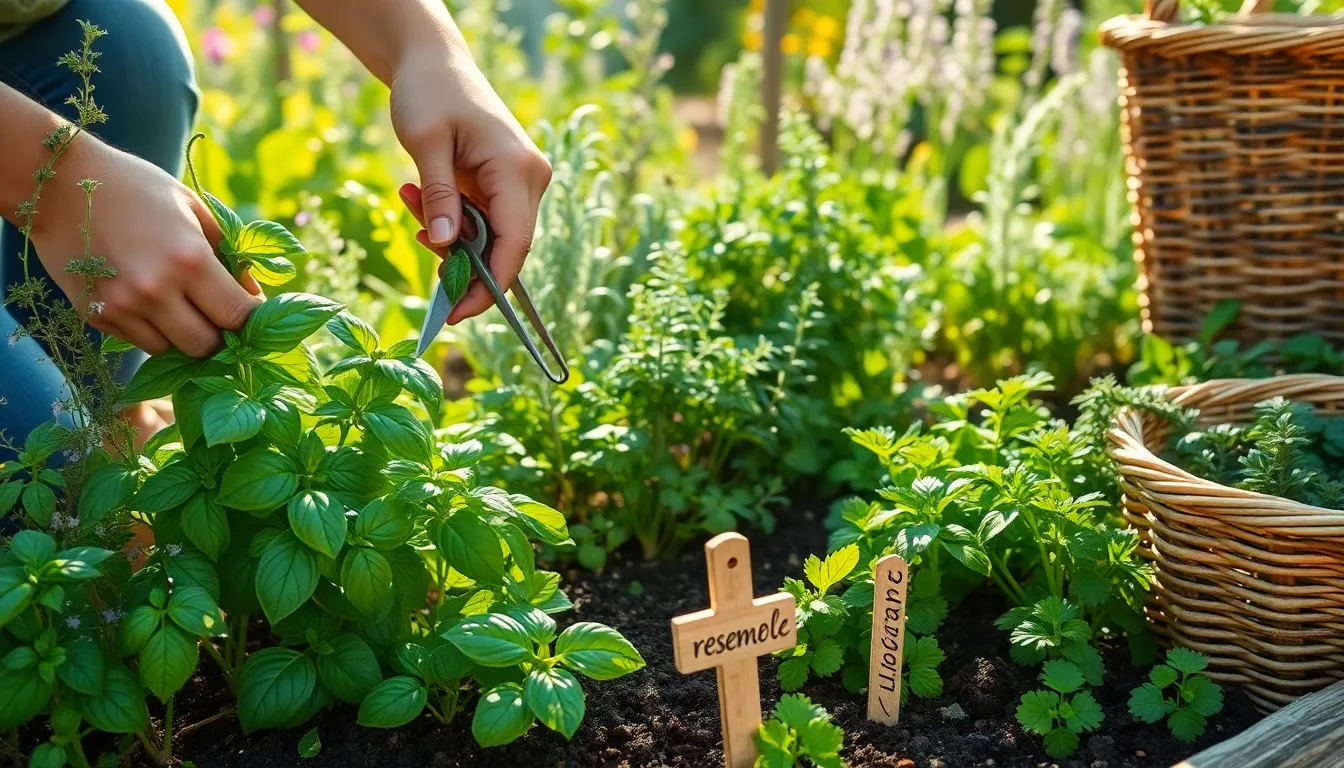Imagine the delight of plucking fresh garlic from your own patio, balcony, or sunny windowsill. Growing garlic in pots is not just a practical solution for those short on garden space; it’s an exciting venture that brings the robust, earthy flavors of homegrown garlic right to your kitchen. Whether you’re a seasoned gardener or a curious beginner, cultivating garlic in containers is a rewarding process that offers a front-row seat to the wonders of nature. This approach demystifies gardening, showing that with just a few simple steps, anyone can harvest this versatile and much-loved herb.
For those new to gardening, starting with garlic is an ideal way to dip your toes into container gardening. Its resilience and straightforward growing process make it accessible, allowing you to develop confidence and hone your skills. Experienced gardeners, on the other hand, will appreciate the strategic use of space and the ability to grow garlic year-round, even in urban environments. This guide will walk you through the essentials, from selecting the right variety and pot to nurturing your plants until they’re ready for harvest.
Throughout this guide, you will discover practical tips and insights that transform the task of planting garlic in pots from a mere possibility into a delightful reality. We’ll explore the best soil mixes, watering techniques, and sunlight requirements to ensure your garlic thrives. By the end of this article, you’ll be equipped with the knowledge to cultivate your own supply of this indispensable kitchen ingredient, enhancing your culinary adventures with the freshest, most flavorful garlic you’ve ever tasted. Let’s embark on this gardening journey together and uncover the joys of growing garlic in pots!
Select Suitable Garlic Cloves
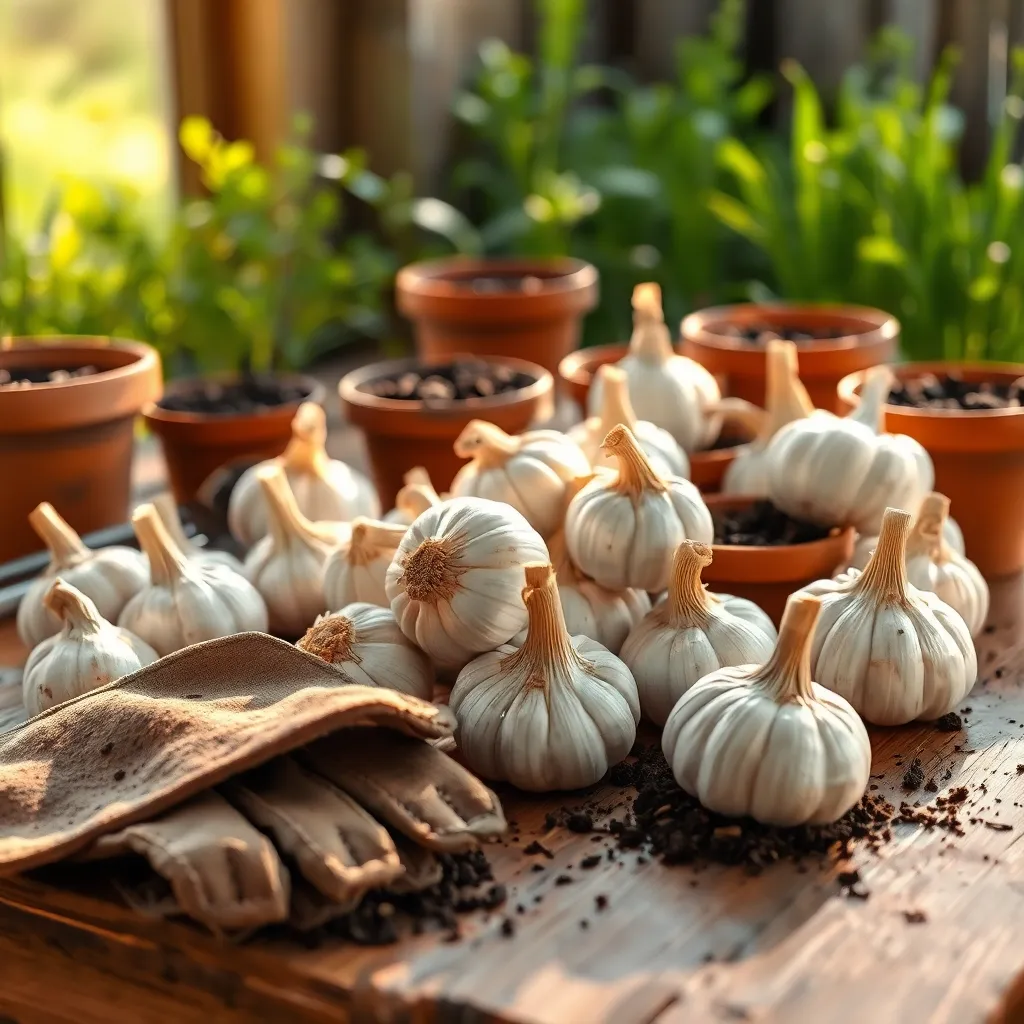
When selecting garlic cloves for planting, choose large, healthy bulbs that are firm to the touch. Avoid any cloves that are soft, shriveled, or show signs of mold, as these are less likely to thrive and produce robust plants.
Opt for garlic varieties that are well-suited to container gardening, such as softneck types, which tend to grow well in smaller spaces. Hardneck varieties can also be successful, but they might require more attention and slightly larger pots to accommodate their growth.
Before planting, gently separate the individual cloves from the bulb, taking care not to damage their papery covering. This protective layer is crucial as it helps prevent disease and supports the clove’s initial growth phase.
For optimal growth, plant the cloves with the pointed end facing upwards and position them about two inches deep into the potting mix. Ensure that each clove is spaced at least four inches apart to allow sufficient room for the roots to expand and develop properly.
Prepare a Well-Draining Pot
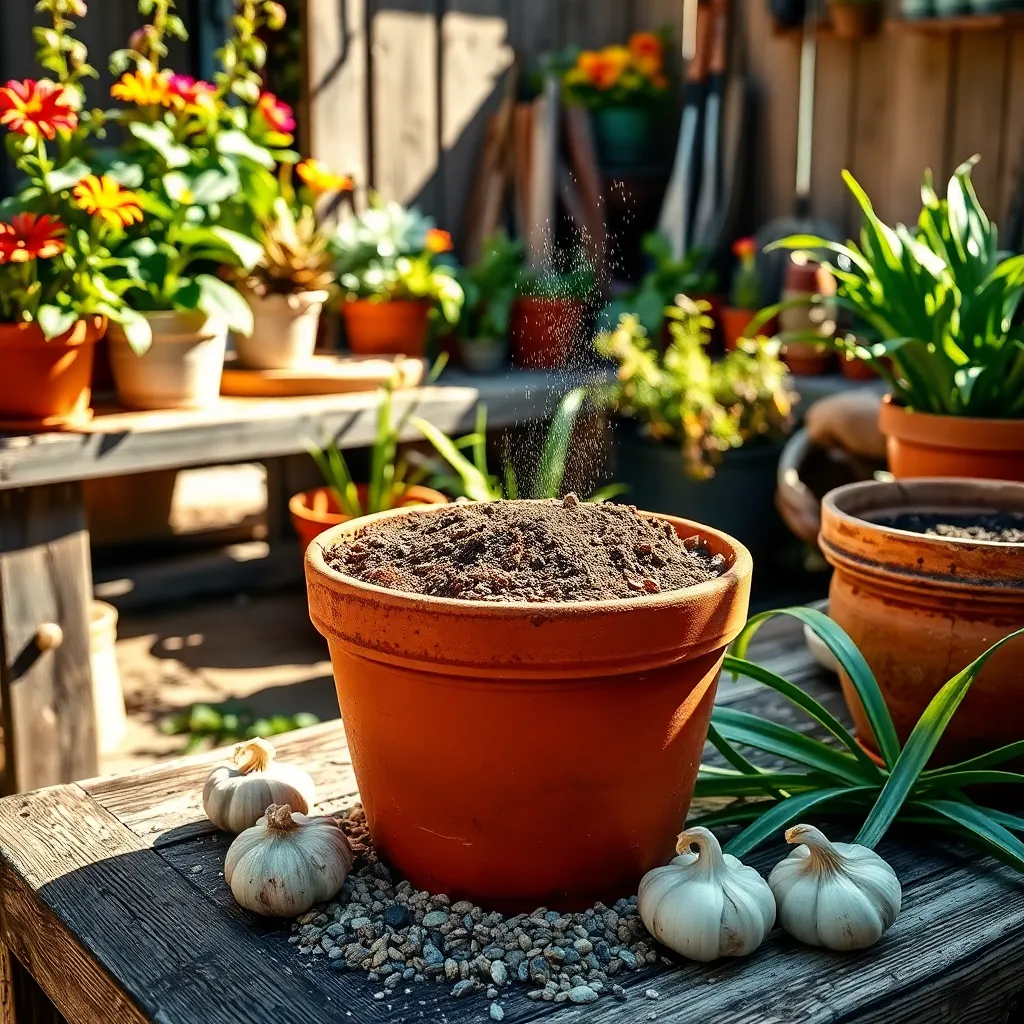
To ensure your garlic thrives, it’s crucial to prepare a well-draining pot that meets its growing needs. Begin by selecting a pot with drainage holes at the bottom; this prevents water from accumulating and causing root rot.
Choose a pot that is at least 12 inches deep, as garlic roots require ample space to grow. The width of the pot should also accommodate multiple cloves if you plan to plant more than one, allowing each clove about 4 inches of space.
Fill the pot with a high-quality potting mix that promotes drainage. Look for a mix that includes ingredients like perlite or sand, which help to keep the soil light and airy.
To further enhance drainage, consider placing a layer of small stones or gravel at the bottom of the pot. This step is especially useful if you’re using a container without built-in drainage holes.
Regular watering is vital, but overdoing it can be detrimental; ensure the top inch of soil dries out before the next watering. During the growing season, stick to a consistent watering schedule to keep the soil evenly moist but not soggy.
Plant Cloves at Correct Depth

To plant garlic cloves at the correct depth, start by preparing your potting mix. Use a well-draining soil that includes a mix of potting soil, sand, and compost to provide the necessary nutrients and drainage.
Each garlic clove should be planted pointy end up and about 2 inches deep in the soil. This depth ensures the clove is protected, while allowing the sprout to emerge easily through the soil surface.
Space each clove approximately 4 inches apart to give them enough room to grow and develop into full bulbs. Proper spacing helps improve air circulation and reduces the risk of disease.
After planting, water the cloves thoroughly but avoid leaving the soil soggy. Maintain a consistent watering schedule, ensuring the soil stays moist but not waterlogged, which helps prevent root rot.
Water and Position for Sunlight
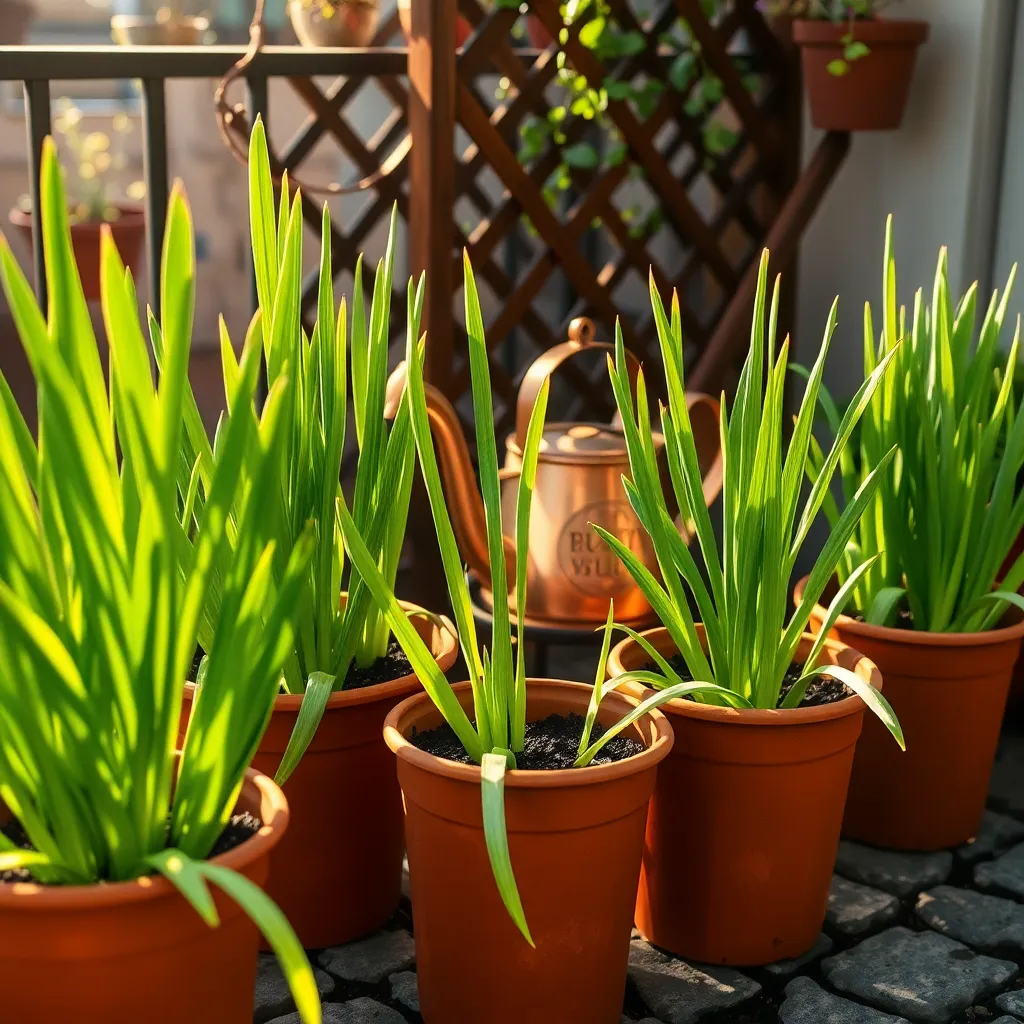
Proper watering and sunlight exposure are crucial for growing garlic in pots. Ensuring that your garlic receives the right amount of both will promote healthy growth and a bountiful harvest.
Garlic prefers a well-draining soil, so be sure to use a potting mix that includes components like perlite or sand. Water your garlic moderately, allowing the top inch of soil to dry out between waterings to prevent rotting.
Place your pots in a location where they can receive full sunlight for at least six to eight hours a day. If natural sunlight is insufficient, consider supplementing with a grow light to ensure your garlic gets the required light intensity.
Monitor your garlic plants for signs of over or under-watering, such as yellowing leaves or dry soil. Adjust your watering schedule based on the season; during cooler months, garlic will require less water.
For optimal growth, turn your pots every few days to ensure even sunlight exposure. This simple practice prevents the garlic from leaning towards the light source and promotes uniform growth.
Monitor Growth and Fertilize Regularly
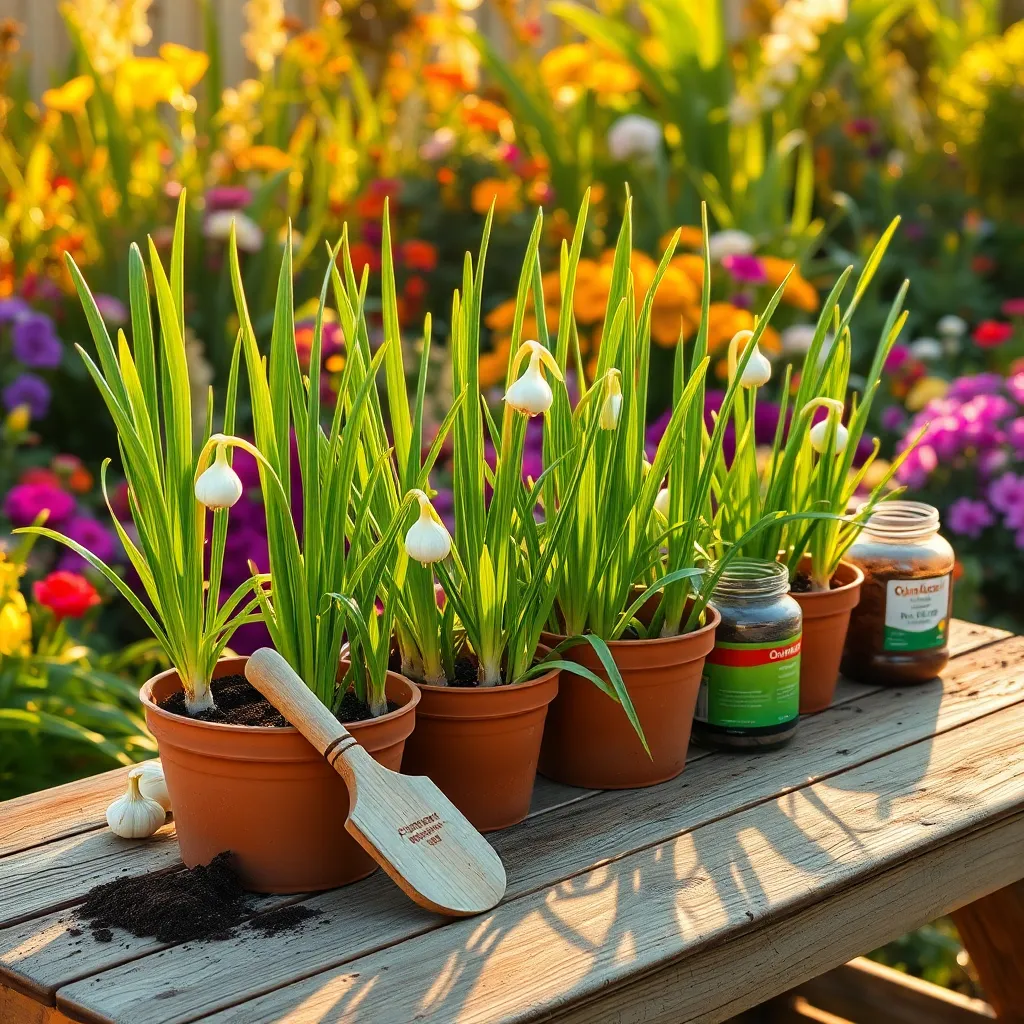
Regular monitoring of your garlic plants is essential to ensure they are healthy and thriving. Check for signs of growth, such as new shoots, and ensure the leaves are a vibrant green color, which indicates good health.
It’s important to watch for any signs of nutrient deficiency, such as yellowing leaves, which may suggest your garlic needs fertilizing. Choose a balanced, organic fertilizer and apply it every 3-4 weeks to support healthy growth.
Begin fertilizing once the first true leaves appear, using a diluted liquid fertilizer for young plants to avoid overfeeding. As the garlic matures, you can switch to a granular fertilizer, which releases nutrients slowly over time.
For those looking to optimize their harvest, consider using a high-phosphorus fertilizer to enhance bulb development. Always follow the recommended application rates on the fertilizer package to prevent nutrient burn and other issues.
Conclusion: Growing Success with These Plants
In nurturing both garlic and relationships, we explored five key concepts: understanding the importance of a nurturing environment, ensuring consistent care and attention, recognizing the value of patience, celebrating growth milestones, and embracing adaptability. Just as garlic thrives with thoughtful planting and care, relationships flourish when we apply these principles, creating bonds that are both resilient and rewarding.
As your immediate next step, take a moment to reflect on one relationship in your life that could benefit from a little extra care. Whether it’s a heartfelt conversation, a small gesture of appreciation, or simply listening more intently, choose one action that aligns with the nurturing principles we’ve discussed.
Don’t lose these invaluable insights—bookmark this article now, so you always have a guide at your fingertips to cultivate stronger, more fulfilling relationships. As you continue on your journey, remember that with each intentional effort, you are planting the seeds for future relationship success, where mutual growth and understanding blossom. Together, let’s create connections that are as robust and enduring as the garlic you’ll grow.

